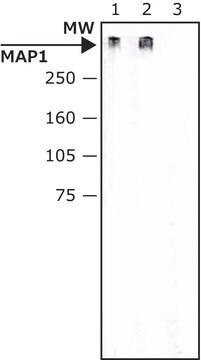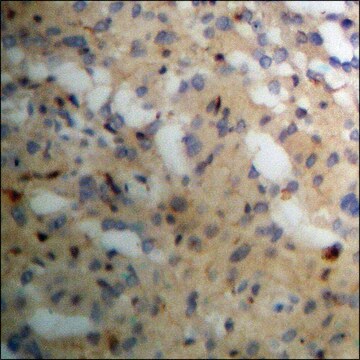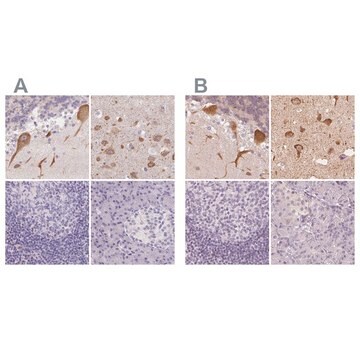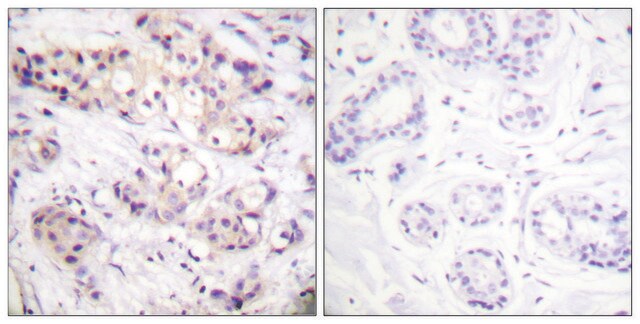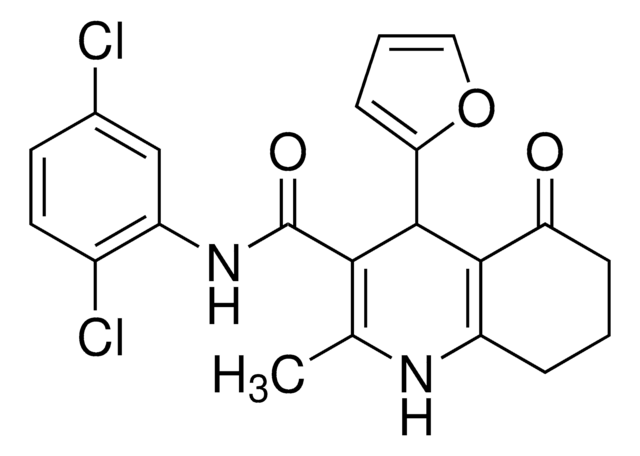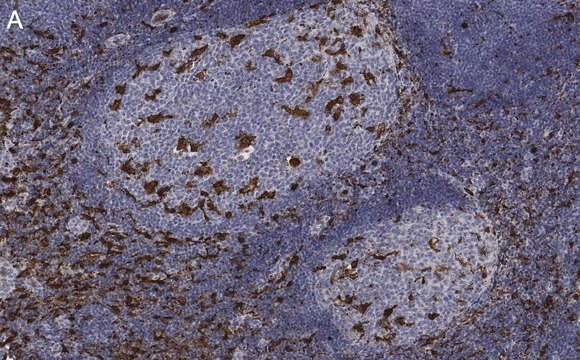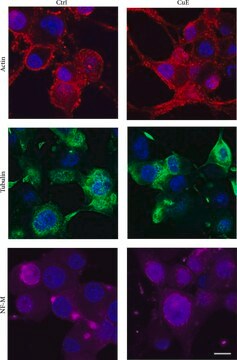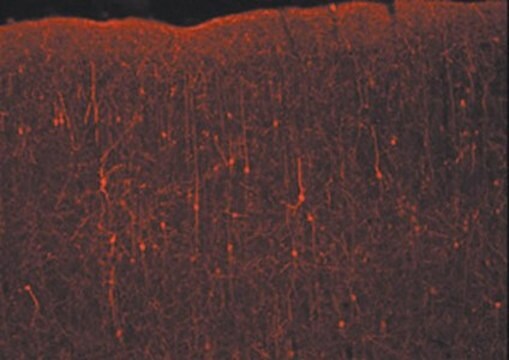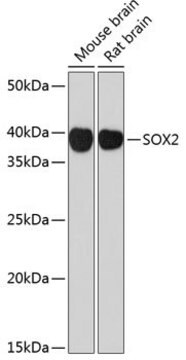MAB362
Przeciwciało anty-MAP1, klon HM-1
ascites fluid, clone HM-1, Chemicon®
Synonim(y):
Microtubule-Associated Protein
About This Item
Polecane produkty
pochodzenie biologiczne
mouse
Poziom jakości
forma przeciwciała
ascites fluid
rodzaj przeciwciała
primary antibodies
klon
HM-1, monoclonal
reaktywność gatunkowa
rat, human, mouse
producent / nazwa handlowa
Chemicon®
metody
immunocytochemistry: suitable
immunohistochemistry: suitable
western blot: suitable
izotyp
IgG1
numer dostępu NCBI
numer dostępu UniProt
Warunki transportu
dry ice
docelowa modyfikacja potranslacyjna
unmodified
informacje o genach
human ... MAP1A(4130)
Specyficzność
Immunogen
Zastosowanie
Immunocytochemia
Optymalne rozcieńczenia robocze muszą być określone przez użytkownika końcowego.
Neuroscience
Neuronal & Glial Markers
Postać fizyczna
Przechowywanie i stabilność
Podczas transportu niewielkie ilości przeciwciał mogą czasami zostać uwięzione w uszczelnieniu fiolki z produktem. W przypadku przeciwciał o objętości 200 μl lub mniejszej zalecamy delikatne uderzenie fiolką o twardą powierzchnię lub krótkie odwirowanie fiolki w wirówce stołowej w celu usunięcia płynu z korka pojemnika.
Informacje prawne
Oświadczenie o zrzeczeniu się odpowiedzialności
Nie możesz znaleźć właściwego produktu?
Wypróbuj nasz Narzędzie selektora produktów.
Kod klasy składowania
12 - Non Combustible Liquids
Klasa zagrożenia wodnego (WGK)
nwg
Temperatura zapłonu (°F)
Not applicable
Temperatura zapłonu (°C)
Not applicable
Certyfikaty analizy (CoA)
Poszukaj Certyfikaty analizy (CoA), wpisując numer partii/serii produktów. Numery serii i partii można znaleźć na etykiecie produktu po słowach „seria” lub „partia”.
Masz już ten produkt?
Dokumenty związane z niedawno zakupionymi produktami zostały zamieszczone w Bibliotece dokumentów.
Nasz zespół naukowców ma doświadczenie we wszystkich obszarach badań, w tym w naukach przyrodniczych, materiałoznawstwie, syntezie chemicznej, chromatografii, analityce i wielu innych dziedzinach.
Skontaktuj się z zespołem ds. pomocy technicznej